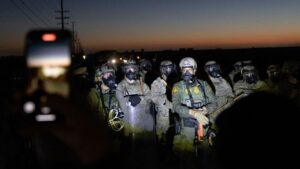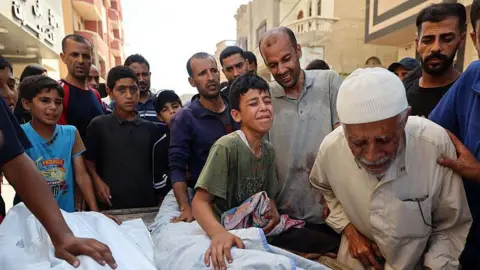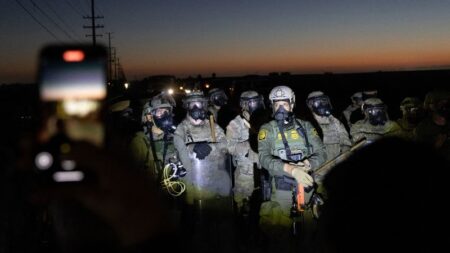In recent reports from emergency officials in Gaza, a tragic and devastating incident occurred when an Israeli airstrike killed ten individuals, among them six children. The attack took place while these civilians were waiting to fill their water containers in central Gaza on a Sunday morning. The situation is an alarming reflection of the ongoing conflict in the region, where civilian casualties continue to rise dramatically.
The casualties were transported to the al-Awda Hospital in Nuseirat, which also treated 16 others who sustained injuries during the strike, comprising seven children. Eyewitness accounts provided by locals indicate that a drone targeted a crowd that was queuing with empty jerry cans next to a water tanker in the al-Nuseirat refugee camp, where the airstrike transpired. This incident drew attention to the perilous conditions faced by families in their daily lives, where even the simple act of fetching water has become fraught with danger.
Subsequent to the strike, the International Committee of the Red Cross (ICRC) disclosed that its field hospital in Rafah had treated a greater number of mass casualty cases over the past six weeks than in the entire previous year. The escalation of violence has seen an alarming uptick in injuries and deaths resulting from recent aerial attacks across Gaza.
Unverified footage that circulated online after the incident captured graphic scenes of bloodied children and lifeless bodies amidst cries of despair and panic. Local residents rushed to the site, using private vehicles and donkey carts to transport the wounded to medical facilities amidst a chaotic environment. The airstrike is part of a broader pattern of escalated Israeli aerial attacks, with reports indicating that 19 other Palestinians were killed across three separate strikes on residential buildings in central Gaza and Gaza City on the same day.
The ICRC’s emergency response has met overwhelming demand, receiving an unprecedented number of patients with weapon-related injuries. On a particularly grim Saturday, the hospital received 132 individuals, with 31 of them reported to have died afterward. A majority of those treated were suffering from gunshot wounds, all claiming to have been injured while attempting to access food distribution sites—another indicator of the dire humanitarian crisis that has gripped the area.
Persistent issues of safety and food scarcity have resulted in escalating violence, with the UN human rights office documenting 789 aid-related killings since the onset of renewed hostilities. Many of these fatalities occurred near sites established by the US and Israeli-backed Gaza Humanitarian Foundation (GHF), which began operating in late May. Various incidents near aid distribution sites highlight the risks civilians face amidst military operations, with accusations and disputes regarding the reliability of statistical reporting between the GHF and the UN.
Amid all turmoil, the humanitarian situation in Gaza remains critical. Since the initiation of Israeli military operations in retaliation for Hamas’s cross-border attack on October 7, 2023, the loss of life has soared, with reports estimating at least 57,882 fatalities in Gaza. The ongoing conflict has displaced a vast majority of the population multiple times, decimating residential areas and overwhelming public services such as healthcare and sanitation.
In a recent welcome, albeit insufficient, development, there was a reported influx of 75,000 liters of fuel into Gaza for the first time in 130 days. However, humanitarian organizations argue that this quantity is far from adequate to meet the needs of the population, warning that ongoing shortages could severely impact critical services in hospitals and water supply systems. As the UN highlighted, hospitals are reaching critical breaking points, along with essential facilities failing, indicating the urgent need for more sustainable humanitarian assistance to alleviate the suffering of civilians in Gaza.
This incident underscores the horrific conditions that the civilian population is enduring in a conflict that seems to spiral further into chaos, emphasizing the need for immediate international attention and intervention to stem the tide of violence and ensure humanitarian aid can reach those in desperate need.








